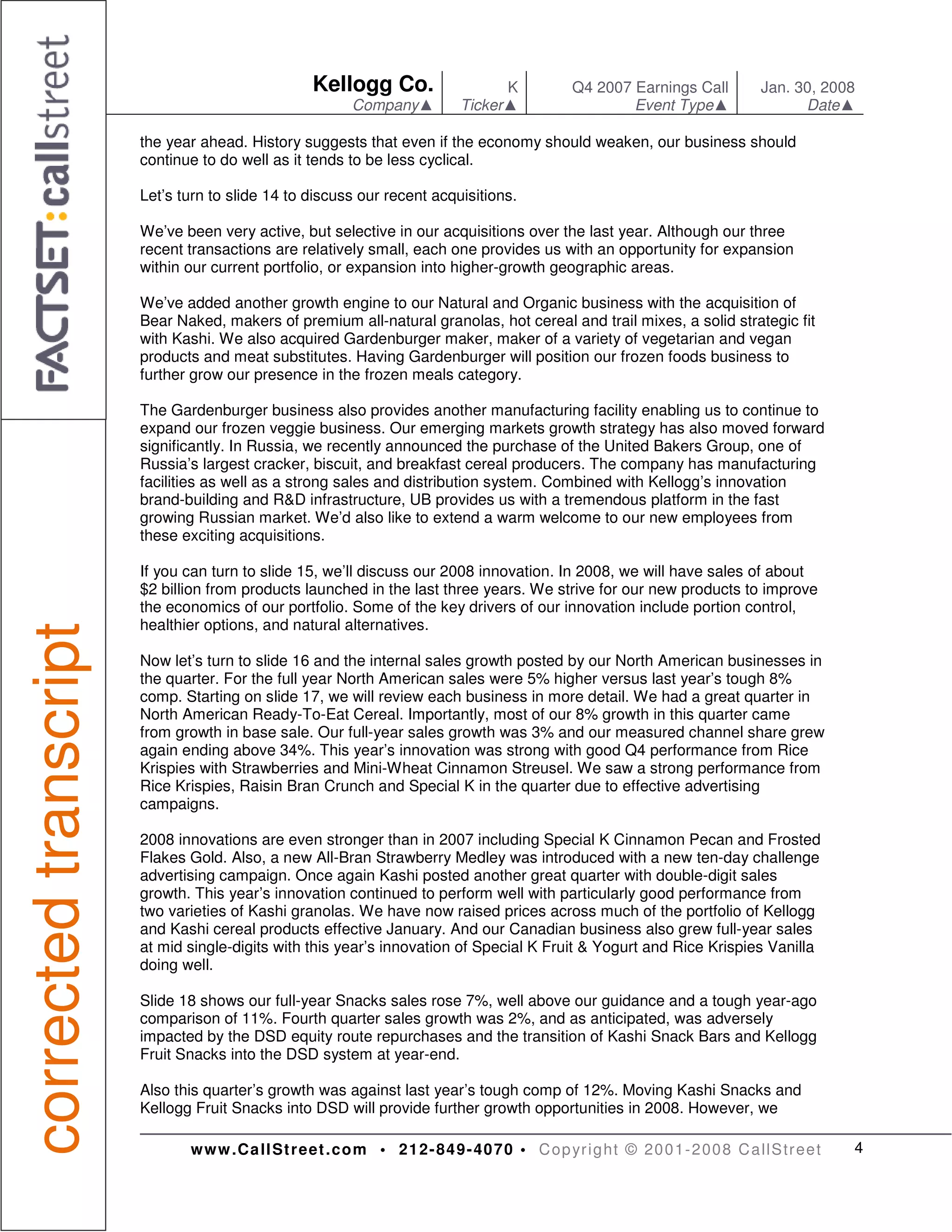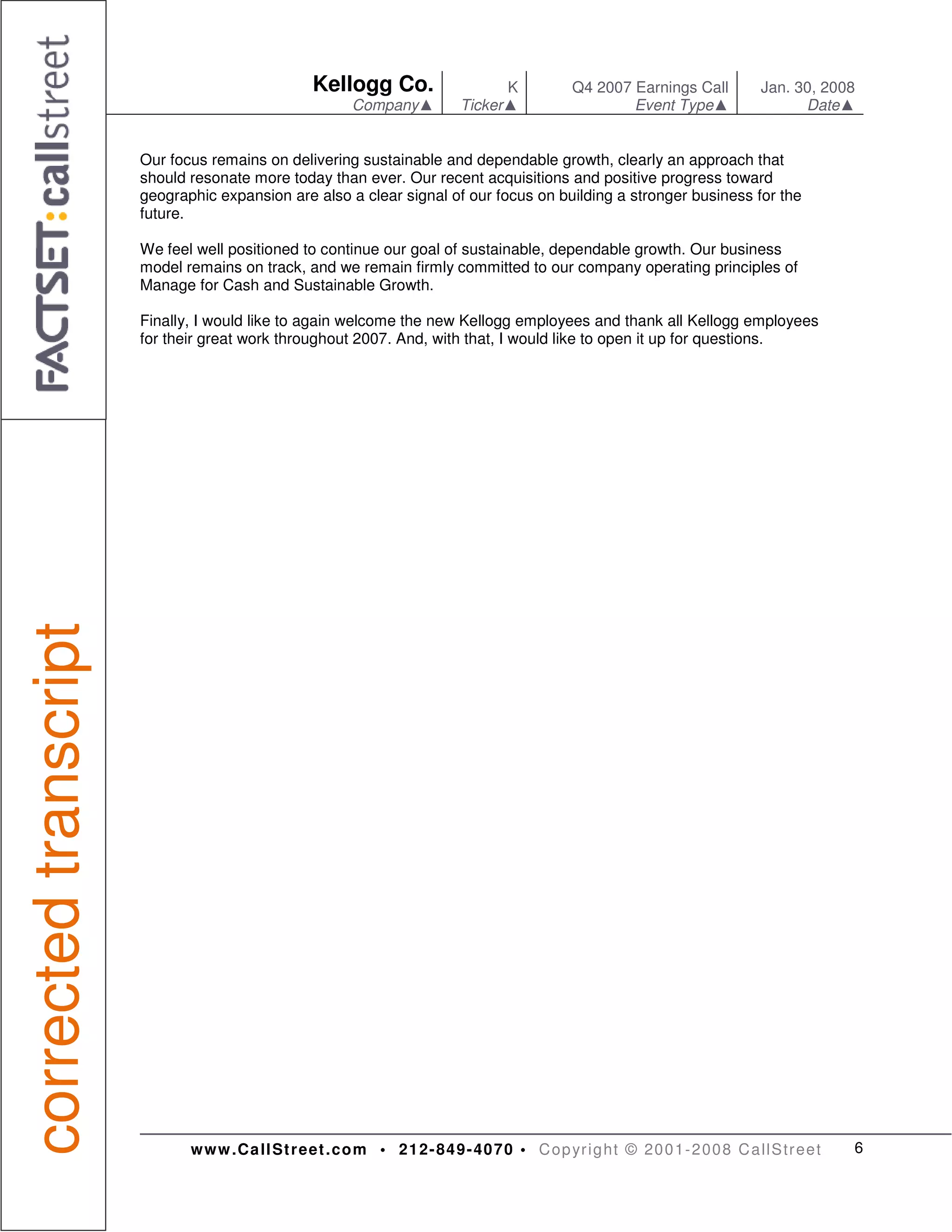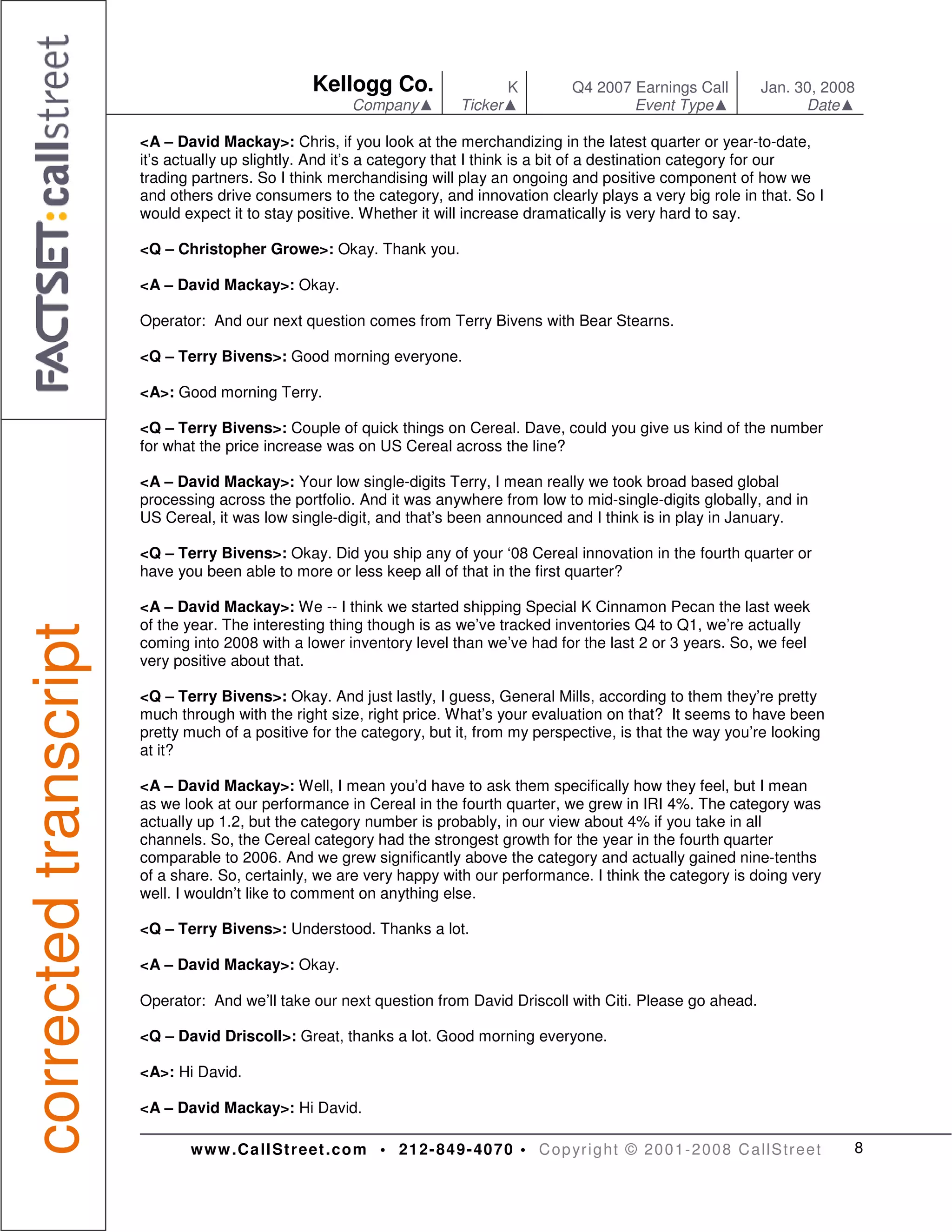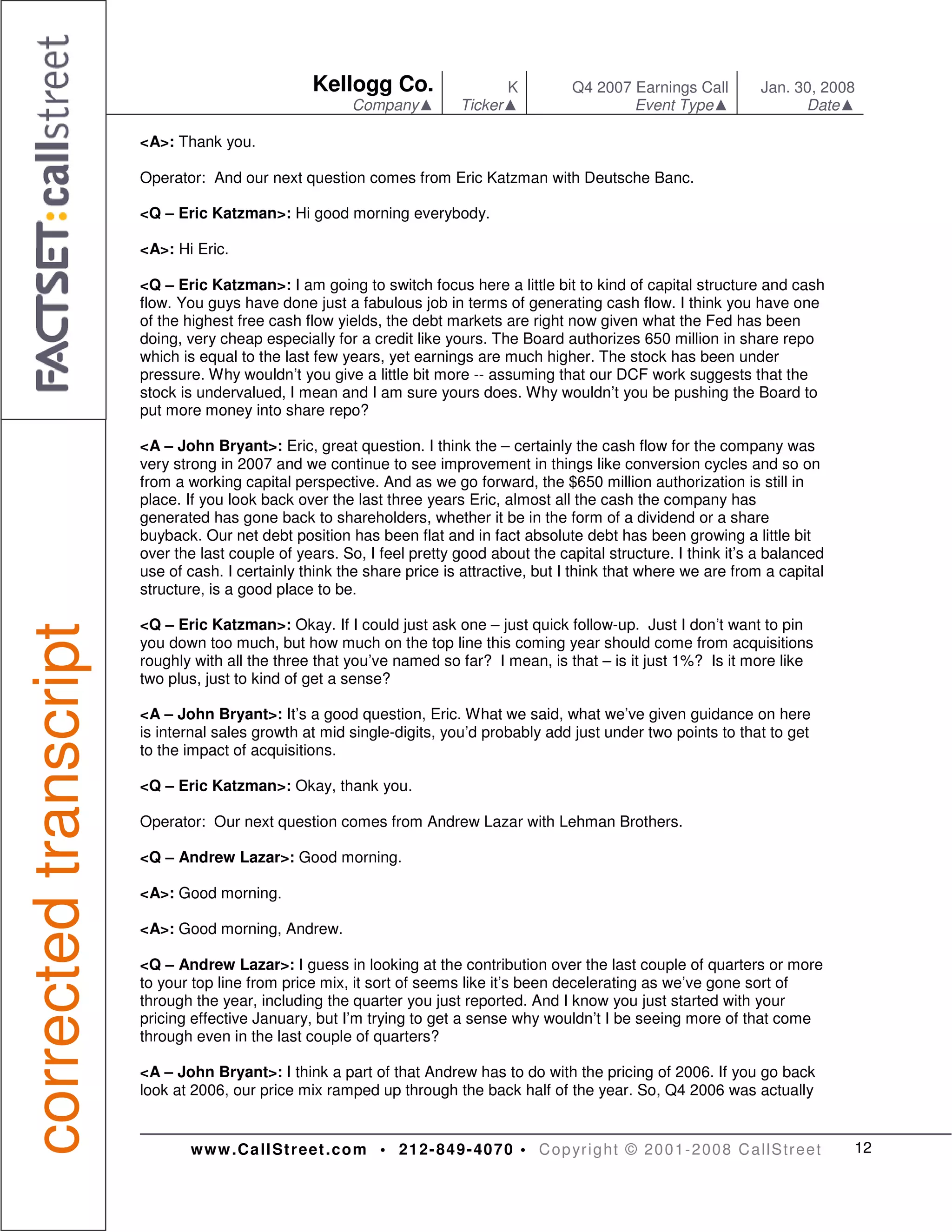Embed presentation
Download to read offline
















Kellogg reported strong financial results for Q4 2007 and full year 2007. Net sales grew 8% for the year due to price increases and volume growth. Operating profit rose 6% despite high inflation. EPS grew 10% to $2.76 for the year through strong performance, lower tax rate, and share repurchases. For 2008, Kellogg expects mid-single digit sales and profit growth and high single digit EPS growth of $2.92 to $2.97 despite significant cost inflation, as they continue investing in the business.















